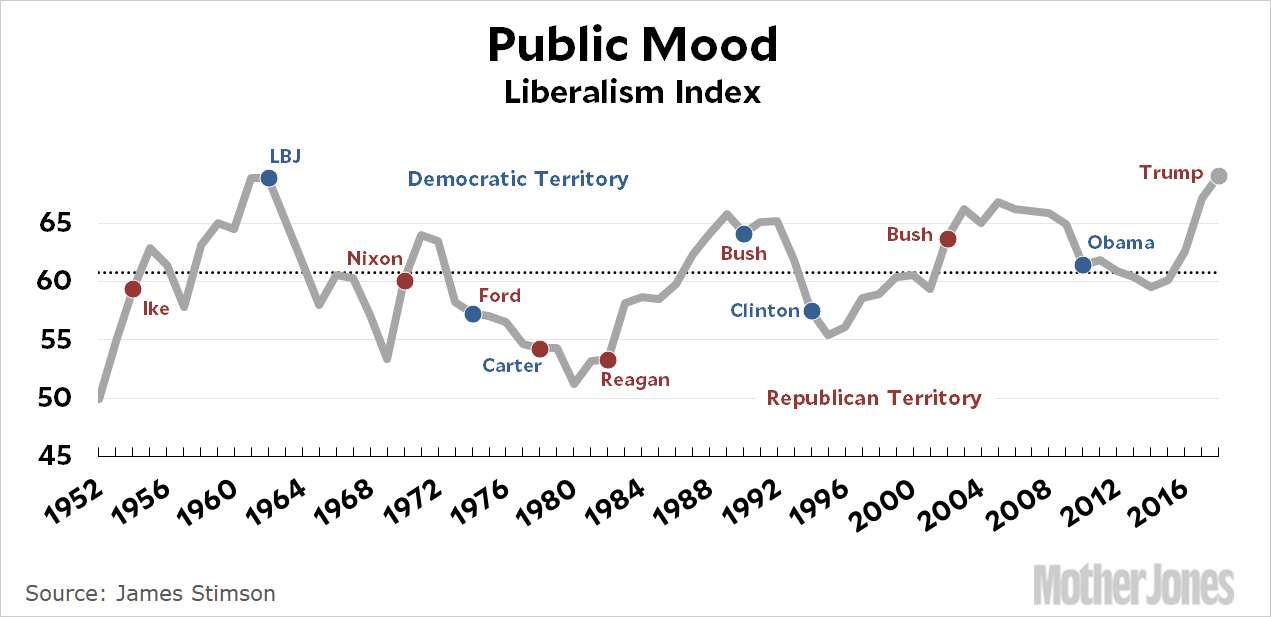Yesterday I wrote a post about the latest results of James Stimson’s national mood index, and I had a couple of questions about it. First, I wondered what it meant to say that a lot of people had a “liberal” view on something like inflation or the deficit. Second, I wondered if the increasing liberalness of the index was driven by liberals getting more liberal or by centrists and conservatives moving toward liberal views.
James Stimson himself wrote back with answers, so I thought I’d share. The mood index is based on an aggregation of various surveys throughout the year, and here’s what he says about how the underlying calculations work:
What does it mean that a particular issue or topic is strongly associated with the mood estimate? First, the underlying assumption of the estimation process is that survey questions are comparable to exactly the same question at different times. So take the Gallup question about taxes: “Do you think the federal income taxes that you pay are too high, too low, or about right?” Not surprisingly, the number claiming that taxes are too low is very small. But the number claiming that they are about right varies over time and is highly correlated with other aspects of liberalism. So even though a majority says “too high,” the size of the tolerant minority varies and is highly related to other aspects of liberalism. It is change over time that drives everything. So on this question we have a conservative majority that is moving toward liberalism.

What does growing liberalism mean? The calculation of the index takes each survey question and collapses the possible response into liberal responses, conservative responses, and neutral or uncodable responses. So a score of 69 for 2018 means that for the typical survey question that year (weighted by validity), about 69 percent chose the liberal response options and 31 percent chose the conservative ones. Imagine that on a question on the ACA the responses are:
- Strongly Support 26%
- Support 24%
- Neutral 10%
- Oppose 20%
- Strongly Oppose 20%
Both Strongly Support and Support would be coded liberal while Strongly Oppose and Oppose would be coded conservative. Now the crucial point: moving from Support to Strongly Support has no effect whatsoever on the scale score; they are both liberal responses. So the answer to your question is that increasing liberalism scores mean that more people are choosing the liberal responses than in the comparison year. Thus this is not liberals becoming more liberal, it is more people becoming liberal (without regard to degree).


















